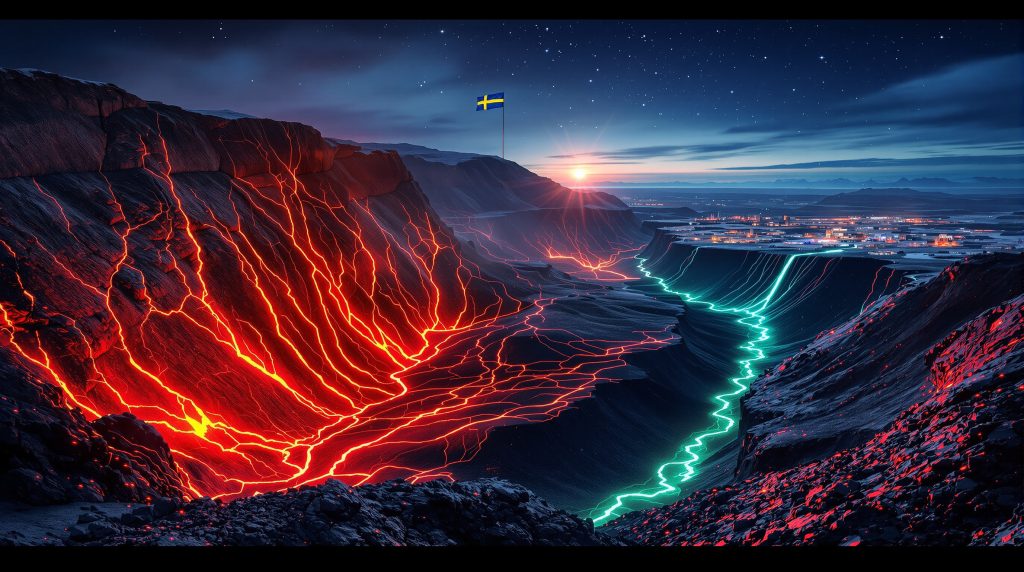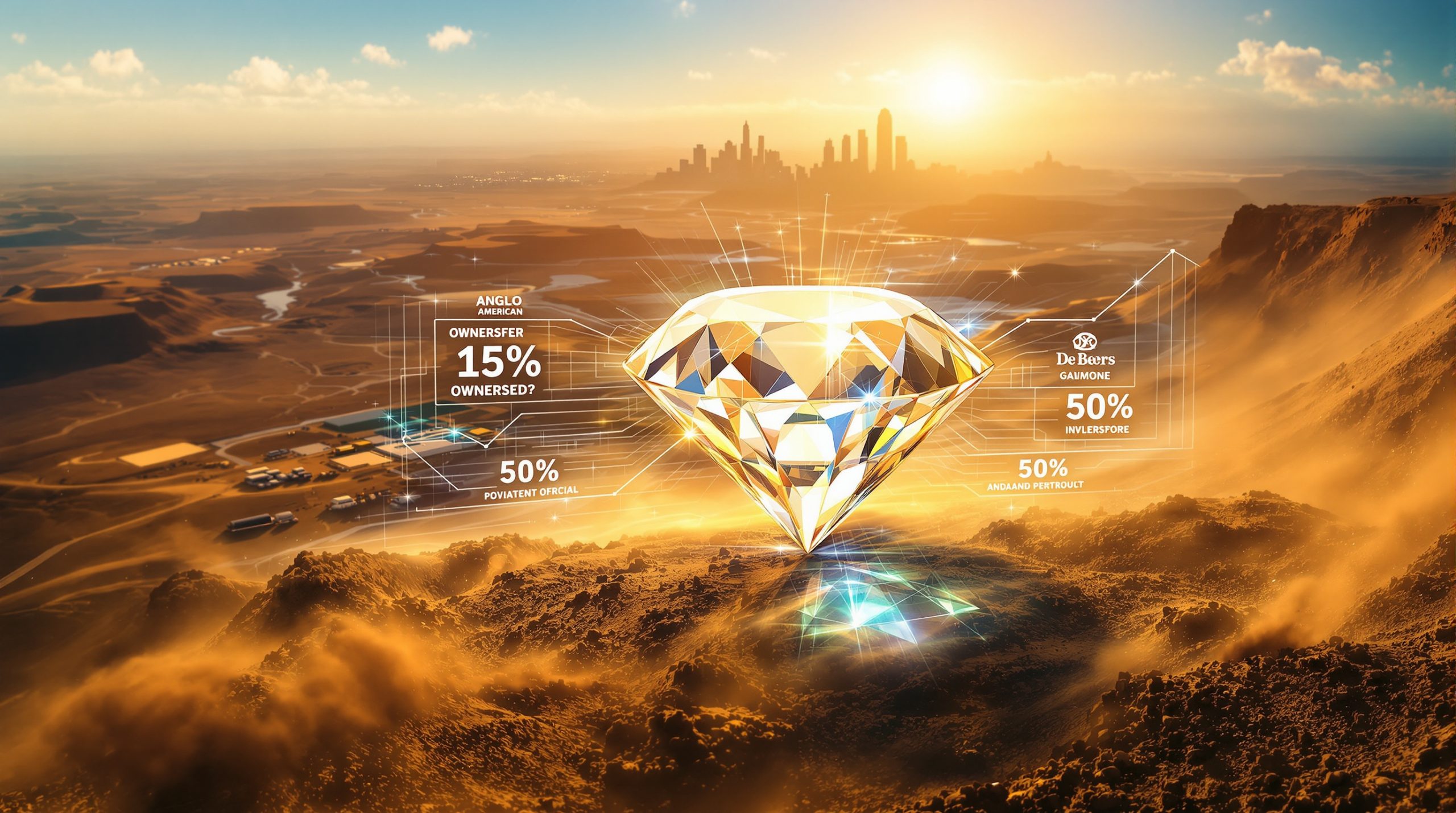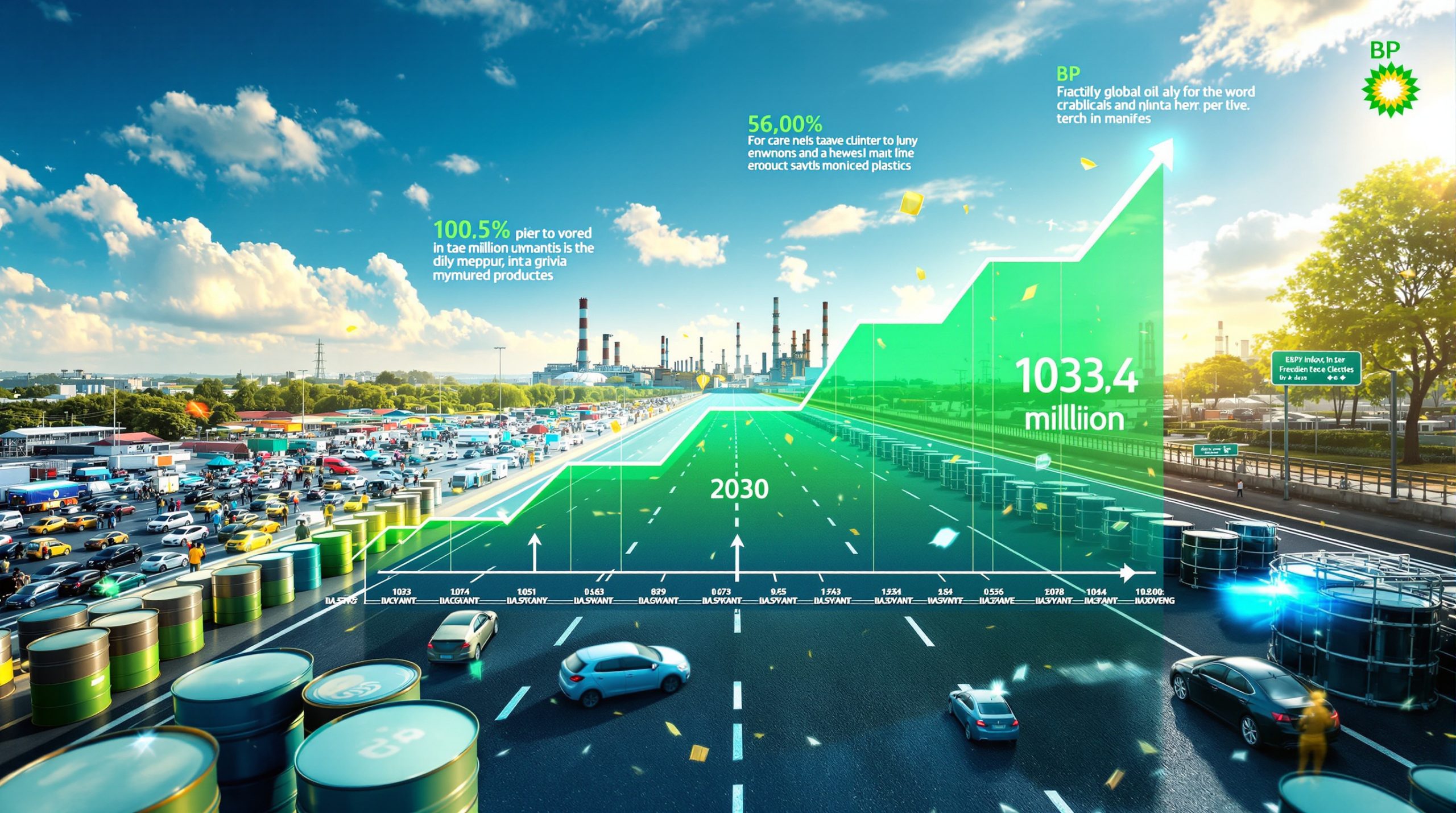Understanding Kiruna Iron-Oxide-Apatite Deposits: Geological Marvel and Economic Powerhouse
Iron-oxide-apatite (IOA) deposits, often referred to as "Kiruna-type" deposits after their most famous example in northern Sweden, represent one of the world's most significant sources of high-grade iron ore. These remarkable geological formations are characterized by massive concentrations of magnetite (Fe₃O₄) with variable amounts of apatite (Ca₅(PO₄)₃(F,Cl,OH)), creating ore bodies of exceptional purity and economic value.
The Kiruna district itself hosts several major deposits, with the main Kiirunavaara deposit containing proven and probable reserves of 585 million tonnes grading 46.7% iron, alongside measured, indicated, and inferred resources totaling 1,092 million tonnes at 55% iron. Prior to mining, the original deposit is estimated to have contained approximately 2 billion tonnes of ore with an extraordinary grade of 61% iron and 0.97% phosphorus.
How Did Kiruna Deposits Form? The Scientific Controversy
The origin of Kiruna-type deposits remains one of geology's most hotly debated topics, with multiple competing theories that have evolved over decades of research. The scientific community remains divided between two primary formation models, with emerging evidence suggesting a hybrid process may be most accurate.
The Magmatic Origin Theory
The magmatic model proposes that IOA deposits form directly from iron-phosphorus-rich magmas through a process called liquid immiscibility. Under specific temperature and pressure conditions, a single magma can spontaneously separate into two distinct liquids – one rich in iron and phosphorus, and another with more typical silicate composition.
This model elegantly explains several key features of Kiruna deposits:
- The sharp, well-defined boundaries between ore bodies and surrounding rock
- The massive, homogeneous nature of the magnetite slabs
- The close association with volcanic environments
However, critics point out significant flaws in this theory. The extremely dense iron-rich melt should logically sink to the bottom of any magma chamber, yet many IOA deposits appear to have moved upward through the crust. Additionally, some IOA deposits in Chile show evidence of having erupted at the surface, which would be difficult to explain through simple magmatic processes.
The Hydrothermal Origin Theory
The competing hydrothermal model suggests that hot, mineral-rich fluids circulating through the crust replaced existing rocks with iron and phosphorus minerals. Recent research has attempted to place IOA deposits within a broader framework of Metasomatic Iron-Alkali-Calcic (MIAC) systems, which would explain their frequent association with Iron-Oxide-Copper-Gold (IOCG) deposits.
Supporting evidence includes:
- Pre-ore alteration patterns in surrounding rocks
- Post-ore veins containing similar minerals
- Isotopic signatures indicating a range of formation temperatures
The primary challenge for this theory is explaining how hydrothermal fluids could become sufficiently enriched in iron to form such massive, high-grade deposits, and why they would create such sharply defined ore bodies.
The Hybrid Formation Model: Bridging the Gap
Current research increasingly supports a hybrid model that incorporates elements of both magmatic and hydrothermal processes. This model proposes a multi-stage formation process:
-
Initial magnetite crystallization occurs within an iron-rich magma
-
Volatile components like water and chlorine form bubbles that attach to magnetite crystals
-
These bubbles create buoyancy, causing magnetite to rise within the magma chamber
-
Chlorine-rich fluids effectively concentrate and transport additional iron
-
This creates a positive feedback loop, generating an expanding "foam" of iron-rich fluid
-
The buoyant iron-chlorine fluid eventually escapes the magma chamber
-
As it rises through cooler crust, rapid crystallization occurs, forming the deposit
This model elegantly explains most observed features of IOA deposits, including stable isotope evidence showing magnetite formation across a wide temperature range (from magmatic to hydrothermal conditions).
Where Are Major Kiruna-Type Deposits Located Globally?
While the Kiruna district in northern Sweden represents the archetypal example of IOA deposits, similar formations occur worldwide, primarily in volcanic arc settings. Notable examples include:
-
El Laco and Cerro Negro Norte deposits (Chile) – These Andean deposits show evidence of surficial eruption of iron-oxide lavas, challenging conventional formation theories
-
Iron deposits of the St. Francois Mountains (Missouri, USA) – Including the Pea Ridge and Pilot Knob deposits, which contain significant rare earth element concentrations
-
Bafq mining district (Iran) – Hosts numerous IOA deposits with combined reserves exceeding 2 billion tonnes of iron ore
-
Grängesberg mining district (Sweden) – Often grouped with Kiruna, these central Swedish deposits have been mined since the 16th century
-
Olympic Dam (Australia) – While primarily known as an IOCG deposit, it shares genetic relationships with IOA systems and contains significant magnetite resources
The global distribution of these deposits in volcanic arc settings provides important clues about their formation processes and potential exploration targets.
What Makes Kiruna Economically Significant?
Iron Production: Europe's Vital Resource
The Kiruna mining complex, operated by state-owned Luossavaara-Kiirunavaara AB (LKAB), has been in continuous operation for over 120 years and produces approximately 28 million tonnes of iron ore annually. This represents approximately 80% of Europe's total iron ore production, making it a strategically vital resource for European steel manufacturing.
Despite being an underground operation – generally more costly than open-pit mining – Kiruna remains highly profitable due to the exceptional purity of its ore. The mine is expected to remain operational until at least 2048 based on current reserves. Understanding the iron ore price trends is essential for appreciating the economic importance of these deposits.
Table: Kiruna's Iron Resources
| Category | Tonnage (Mt) | Iron Grade (%) | Phosphorus (%) |
|---|---|---|---|
| Proven & Probable Reserves | 585 | 46.7 | – |
| Measured, Indicated & Inferred Resources | 1,092 | 55.0 | – |
| Original Pre-Mining Estimate | ~2,000 | 61.0 | 0.97 |
Rare Earth Elements: Europe's Largest Deposit
In 2023, LKAB announced a significant discovery at the nearby Per Geijer deposit, revealing Europe's largest known rare earth element (REE) resource. The deposit contains:
- 585 million tonnes of ore at 50.5% iron
- 2.41% phosphorus
- 0.18% rare earth element oxides
While these REE grades are relatively low compared to dedicated REE mines elsewhere, the massive scale of the deposit and its location within Europe make it strategically significant. The REEs are contained within apatite minerals, which also provide valuable phosphorus and fluorine.
This discovery positions Kiruna as a potential cornerstone of Europe's critical raw materials supply, offering:
-
Rare Earth Elements – Essential components for renewable energy technologies, advanced electronics, and defense applications
-
Phosphorus – A critical nutrient for agricultural fertilizers
-
Fluorine – An important industrial chemical
-
Iron – The fundamental building block of steel and infrastructure
The diversified revenue potential from these multiple commodities enhances the long-term economic viability of the operation.
How Has Kiruna Influenced History?
World War II Strategic Importance
During World War II, Kiruna's iron ore played a pivotal role in geopolitical strategy. As Germany's primary iron source, the ore was transported by rail to the Norwegian port of Narvik, then shipped down the coasts of neutral Norway and Denmark to German ports.
This supply line was so crucial to the German war effort that Winston Churchill ordered British forces to disrupt it. Hitler's response was the invasion of both Denmark and Norway in 1940, bringing approximately 430,000 square kilometers and 6.8 million people under Nazi occupation largely to secure access to Kiruna's iron. Sweden, recognizing its vulnerable position, continued supplying Germany with iron throughout most of the war.
The Moving City
In 2004, mining engineers discovered that underground expansion of the mine was causing ground subsidence that threatened the town of Kiruna itself. This led to an unprecedented urban planning challenge: moving an entire city of approximately 20,000 residents three kilometers eastward.
The gradual relocation began in 2014 and is expected to continue until 2040, with historic buildings being physically transported and new infrastructure constructed in the new location. This remarkable engineering project demonstrates both the economic importance of the mine and the complex social considerations involved in resource extraction.
What Technical Challenges Face Kiruna's Future Development?
REE Processing Complexities
While the Per Geijer deposit represents an enormous potential REE resource, significant technical challenges must be overcome before production can begin:
-
Low REE Grades – At 0.18% REE oxides, the concentration is significantly lower than dedicated REE mines elsewhere
-
Phosphate Mineralogy – REEs contained within apatite are more difficult to process than the preferred REE carbonate ores
-
Complex Metallurgy – Developing cost-effective methods to separate multiple elements from the ore
-
Economic Viability – Ensuring that processing costs don't exceed the value of recovered metals
On the positive side, apatite-hosted REEs typically contain lower concentrations of radioactive elements than some other REE deposits, potentially simplifying waste management as discussed in a recent study on IOA deposits.
Underground Mining Expansion
LKAB has already begun developing underground infrastructure to access the Per Geijer deposit, including driving a long exploration drift. This represents a significant capital investment before any REE production can begin, highlighting the company's confidence in the project's viability.
The transition from iron-focused mining to multi-element extraction will require new processing facilities, technical expertise, and market relationships – all substantial investments beyond traditional iron ore mining. Implementing modern mine planning techniques is crucial for these complex operations.
What Are the Environmental Implications of Kiruna-Type Mining?
Water Management
Underground mining at Kiruna produces significant volumes of groundwater that must be managed carefully. The operation employs advanced water treatment systems to remove contaminants before discharge, with regular monitoring to ensure compliance with environmental standards.
Waste Rock and Tailings
Processing iron ore and potential future REE extraction will generate substantial volumes of waste rock and tailings. LKAB has implemented progressive reclamation practices, including:
- Backfilling underground workings where possible
- Engineered tailings storage facilities
- Research into potential uses for waste materials
Carbon Footprint Reduction
LKAB has committed to reducing its carbon footprint, with goals including:
- 100% carbon-neutral operations by 2045
- Development of hydrogen-based iron reduction technology
- Electrification of mining equipment and transportation
These initiatives align with broader European climate objectives and enhance the sustainability profile of Kiruna's products. The ongoing mining industry evolution is increasingly focused on such sustainability measures.
How Do Kiruna Deposits Compare to Other Iron Sources?
Table: Comparison of Major Iron Ore Deposit Types
| Deposit Type | Typical Iron Grade (%) | Major Examples | Key Characteristics |
|---|---|---|---|
| Iron-Oxide-Apatite (IOA) | 45-65% | Kiruna (Sweden), El Laco (Chile) | High-grade magnetite, apatite association, volcanic settings |
| Banded Iron Formation (BIF) | 30-45% | Pilbara (Australia), Carajás (Brazil) | Sedimentary origin, extensive lateral continuity, hematite-rich |
| Skarn | 35-55% | Marcona (Peru), Tazadit (Mauritania) | Contact metamorphic, irregular shapes, variable mineralogy |
| Iron-Oxide-Copper-Gold (IOCG) | 25-60% | Olympic Dam (Australia), Candelaria (Chile) | Polymetallic, brecciated, extensive alteration |
Kiruna-type deposits generally offer higher iron grades than most other deposit types, explaining their economic viability despite challenging mining conditions and remote locations. Their association with valuable by-products like phosphorus and REEs further enhances their economic profile. For a comprehensive understanding, consult this deposit comparison guide.
What Does the Future Hold for Kiruna-Type Deposits?
Technological Innovation
The development of efficient processing methods for recovering REEs from apatite at Kiruna could have far-reaching implications. Similar apatite minerals occur in many IOA, IOCG, and phosphorite deposits worldwide. Successfully commercializing REE extraction from these previously overlooked sources could significantly expand global REE supply chains.
Strategic Resource Security
As Europe seeks to reduce dependency on imported critical minerals, Kiruna's potential as a domestic source of both iron and REEs takes on strategic importance. The European Union's Critical Raw Materials Act specifically highlights the need for secure REE supplies, positioning Kiruna as a potential cornerstone of European industrial policy.
Climate Change Adaptation
The transition to renewable energy and electrified transportation will require substantial quantities of both traditional metals like iron and critical minerals like REEs. Kiruna's ability to provide both from a single operation represents an efficient use of resources with potentially lower overall environmental impact than separate mines for each commodity.
FAQ: Common Questions About Kiruna Iron-Oxide-Apatite Deposits
What distinguishes Kiruna-type deposits from other iron formations?
Kiruna-type (IOA) deposits are characterized by massive, high-grade magnetite bodies with significant apatite content, typically occurring in volcanic settings. They differ from more common banded iron formations (BIFs) which are sedimentary in origin and often lower grade.
How do rare earth elements occur in Kiruna deposits?
REEs in Kiruna deposits are primarily contained within the crystal structure of apatite minerals (calcium phosphates). While the concentration is relatively low (0.18% REE oxides at Per Geijer), the massive scale of the deposit makes it significant.
Why is there scientific controversy about how these deposits formed?
The massive, sharply defined nature of Kiruna-type ore bodies is difficult to explain through conventional geological processes. The extreme concentration of iron in relatively pure form, without significant silicate minerals, challenges both purely magmatic and purely hydrothermal formation models.
What makes Kiruna strategically important to Europe?
Kiruna provides approximately 80% of Europe's domestic iron ore production and hosts the continent's largest REE resource. Both materials are essential for manufacturing, renewable energy, and defense applications, making them strategically vital for European industrial autonomy.
How does underground mining at Kiruna compare to open-pit operations?
While underground mining is generally more expensive than open-pit methods, Kiruna's exceptional ore grade makes it economically viable. Underground mining also reduces surface disturbance and waste rock volumes compared to open-pit operations of similar production capacity.
Conclusion: The Enduring Significance of Kiruna
The Kiruna iron-oxide-apatite deposits represent a remarkable geological phenomenon with outsized economic and strategic importance. From their controversial formation processes to their role in wartime geopolitics and future critical mineral supply, these deposits continue to shape both scientific understanding and industrial development.
As Europe and the world transition toward renewable energy and sustainable manufacturing, Kiruna's potential to provide both traditional and critical minerals from a single geological system offers a model for resource efficiency. The ongoing scientific debate about IOA formation also highlights how even long-studied geological systems can continue to yield new insights and challenge established theories.
Whether viewed through the lens of geological science, economic development, or strategic resource policy, the Kiruna deposits remain one of the world's most significant mineral systems – a true geological marvel with continuing relevance in our rapidly evolving global economy.
Further Exploration
Readers interested in learning more about iron-oxide-apatite deposits can also explore related educational content available through the Science Australia Academy's resources on IOCG and Kiruna-type deposits. This resource offers additional perspectives on the geological features and economic significance of Kiruna-type deposits.
Ready to Spot the Next Major Mineral Discovery?
Discovery Alert's proprietary Discovery IQ model instantly identifies significant ASX mineral discoveries, turning complex geological data into actionable investment opportunities. Explore why major discoveries like Kiruna can generate substantial returns by visiting Discovery Alert's dedicated discoveries page and begin your 30-day free trial today.




